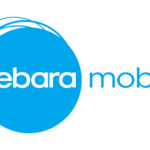
When it comes to scaling your digital infrastructure, the need for zero downtime is paramount. Businesses and organizations today demand the capability to grow and adapt seamlessly to meet user demands. This is where “Zero Downtime Auto Scaling” comes into play. In this comprehensive guide, we’ll delve into the intricacies of this revolutionary approach to scalability that ensures your applications never miss a beat. So, fasten your seatbelts as we embark on a journey through the world of uninterrupted scalability.
Understanding the Basics
Auto scaling, in itself, is a well-known concept, but achieving it without any downtime is the game-changer. In this section, we’ll explore the fundamental principles of zero downtime auto scaling. Auto scaling, simply put, involves automatically adjusting the number of resources allocated to an application based on demand. This can be the number of servers, instances, or containers. The primary goal is to ensure optimal performance while avoiding over-provisioning or under-provisioning.
The Magic of Load Balancers
To implement zero downtime auto scaling, you need a reliable load balancer. Load balancers distribute incoming traffic across multiple instances, allowing your application to handle increased load seamlessly. With proper load balancing, you can scale your resources up or down without causing interruptions.
Choosing the Right Auto Scaling Strategy
There are several strategies available for zero downtime auto scaling, such as “scheduled scaling” and “target tracking scaling.” Each has its own advantages and use cases. It’s crucial to select the one that aligns with your application’s specific needs.
Elasticity: The Heart of Auto Scaling
Elasticity is the ability of your infrastructure to adapt to changing workloads. With zero downtime auto scaling, you achieve elasticity by adjusting resources dynamically based on parameters like CPU utilization, memory usage, or request counts.
Implementing a Blue-Green Deployment
Blue-Green deployment is a practice that allows you to release new versions of your application without any service interruption. This technique is a cornerstone of zero downtime auto scaling. We’ll explore how it works and its benefits.
The Role of Containers
Containerization technologies like Docker and Kubernetes have revolutionized the way we scale applications. Containers are lightweight, scalable, and perfect for zero downtime auto scaling. We’ll dive deep into how containers make this possible.
Monitoring and Alerts
Proactive monitoring and alerting are essential to detect performance issues early. By setting up alerts and thresholds, you can respond swiftly to changes in traffic and maintain zero downtime.
Case Studies
Let’s take a look at real-world examples of organizations that have successfully implemented zero downtime auto scaling. From e-commerce giants to cloud-based SaaS platforms, the benefits are undeniable.
Future Trends
The tech world is ever-evolving. In this section, we’ll discuss the future of zero downtime auto scaling. From AI-driven predictions to serverless computing, the possibilities are limitless.
Final Words
In a world where downtime can be catastrophic, zero downtime auto scaling emerges as the hero. It’s a game-changer, ensuring that your digital infrastructure scales seamlessly to meet user demands without missing a beat. By choosing the right auto scaling strategy, leveraging containerization, and monitoring diligently, you can achieve uninterrupted scalability. Stay ahead of the curve, and your competitors, by embracing this revolutionary approach to scalability.
Commonly Asked Questions
1. What is the difference between traditional auto scaling and zero downtime auto scaling?
Traditional auto scaling may cause brief service interruptions during scaling events, whereas zero downtime auto scaling ensures uninterrupted service.
2. Do I need to be a tech expert to implement zero downtime auto scaling?
Not necessarily. Many cloud providers offer user-friendly tools and documentation to assist in setting up zero downtime auto scaling.
3. Are there any downsides to zero downtime auto scaling?
While it offers numerous benefits, zero downtime auto scaling requires careful planning and monitoring to ensure it functions as intended.
4. Can zero downtime auto scaling work for small businesses and startups?
Absolutely. Small businesses can benefit from zero downtime auto scaling by ensuring their applications are always available, even during traffic spikes.
5. What role does automation play in zero downtime auto scaling?
Automation is at the core of zero downtime auto scaling. It ensures that resource adjustments are made in real-time, without manual intervention.
Advertisement







